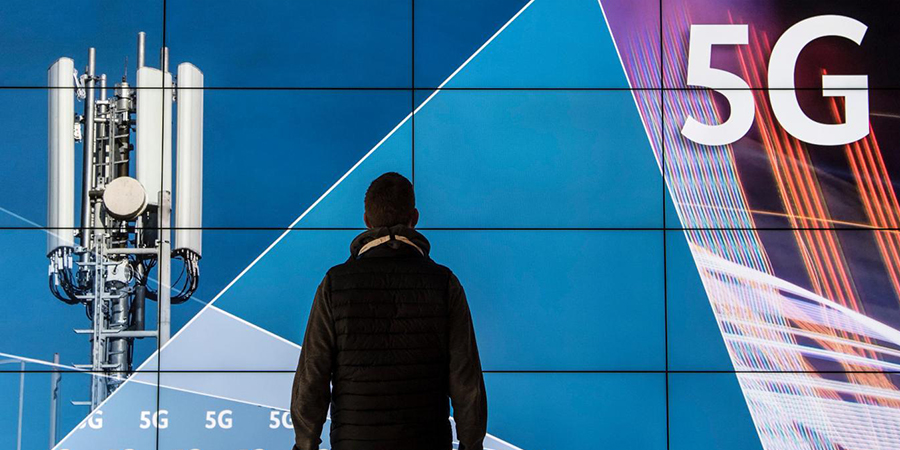The migration from 4G to 5G including 5.5G innovation to enrich the customer experience across multiple markets in the Middle East has begun. With this new connectivity, the need and demand to introduce new digital services in the market is evident and CSPs are looking for flexible ways to deploy 5G private networks and deliver services such as network slicing and edge computing to manage customers’ needs.
Optimizing network architecture to extend 5G capabilities to support IoT, ultra-reliable low latency communications, uplink-centric broadband, real-time broadband communication, and harmonized communication, and sensor technology has become all the more important.
In its report ‘5G in MENA: GCC operators set for global leadership’, the GSMA states that by 2025, there will be around 50 million 5G connections, with around 20 million in the GCC Arab States. The GCC Arab States will be slightly ahead of the global average by 2025, with over 16% adoption (5G as a percentage of total mobile connections), compared to 15% globally.
Collaboration, collaboration and more collaboration
To provide a seamless converged experience for customers on 5G, operators need to upgrade their network technologies to support user migration, 5.5G innovation, and intelligent network development, fast-tracking the introduction of new digital services. Furthermore, advancing AI and digital solutions will greatly benefit customers across multiple markets.
In the future, 5G needs to support multi-dimensional services such as AR/VR, cloud gaming, passive IoT, autonomous driving, mobile hospitals etc. Both operators and vendors will need to pursue deeper collaboration to manage the volume of data traffic emanating from the newer connections.
Getting ready
A recent Market Statsville Group study shows that the global 5G enterprise market size valued at $2.1 billion in 2021 and is projected to reach $21.7 billion by 2030, growing at a CAGR of 33.9% from 2022 to 2030.
Investments in fiber deployment: In the Middle East and African region, investments in submarine cables have increased considerably over the years, with the government and enterprises continuously strengthening fiber infrastructure for better connectivity with other countries as well as driving investments in data centers.
6GHz wave: 6 GHz is one of the optimal bands in medium frequency to provide seamless wide-area coverage and high-capacity connections. It is essential to sustain a healthy IMT development. Licensing 6 GHz to IMT services will facilitate management and help the industry fulfill higher requirements. Mobile networks will create more economic and social value than any other wireless technology, therefore, it justifies the mobile industry's bid for more spectrum reserve. Global collaboration is vital to developing a 6 GHz IMT ecosystem and making it commercially available by 2023.
As a global mobile industry standards organization, 3GPP has initiated the standardization of U6G, which will be completed in 2022. It is a critical step towards the global launch and will provide future industry chain a standard basis for the research and development of 6 GHz products.
Security still a concern
Unauthorized access to enterprise networks has been one of the pain points in the 5G growth story. Ethical hackers participating at a joint hackathon event during the recently concluded GISEC 2022 were able to hack into almost all the networks, highlighting the vulnerability of potential cybersecurity threats for both public and private organizations. Netscout Systems’ bi-annual Threat Intelligence Report states that during the second half of 2021, cybercriminals launched approximately 4.4 million Distributed Denial of Service (DDoS) attacks, bringing the total number of DDoS attacks in 2021 to 9.75 million. These attacks represent a 3% decrease from the record number set during the height of the pandemic but continue at a pace that's 14% above pre-pandemic levels.
In a bid to protect the cyber landscape, UAE’s Cybersecurity Council has signed an MoU with Huawei to collaborate in the strengthening of local strategies and efforts related to cybersecurity in building visibility and promoting thought leadership in the area of cybersecurity, cooperating in the field of cybersecurity research and development through an independent think tank. Spending on security including hardware, software, and services is also on the rise across the region, predicted to grow 7% to $3.76 billion in 2022 according to IDC.
Furthermore, the increasing investment by several countries in mobile computing and communication solutions and the increasing need for low latency connectivity are anticipated to create lucrative opportunities globally in the 5G enterprise market.
Responding to how 5G will be incorporated in every aspect of the urban world, Borje Ekholm, president and CEO, Ericsson Group says, “Consumers have digitalized, we are seeing governments needing to digitalize, enterprises digitalizing and that shows how important the digital infrastructure is to change the way we work, live and function.”
